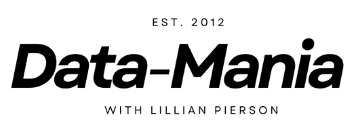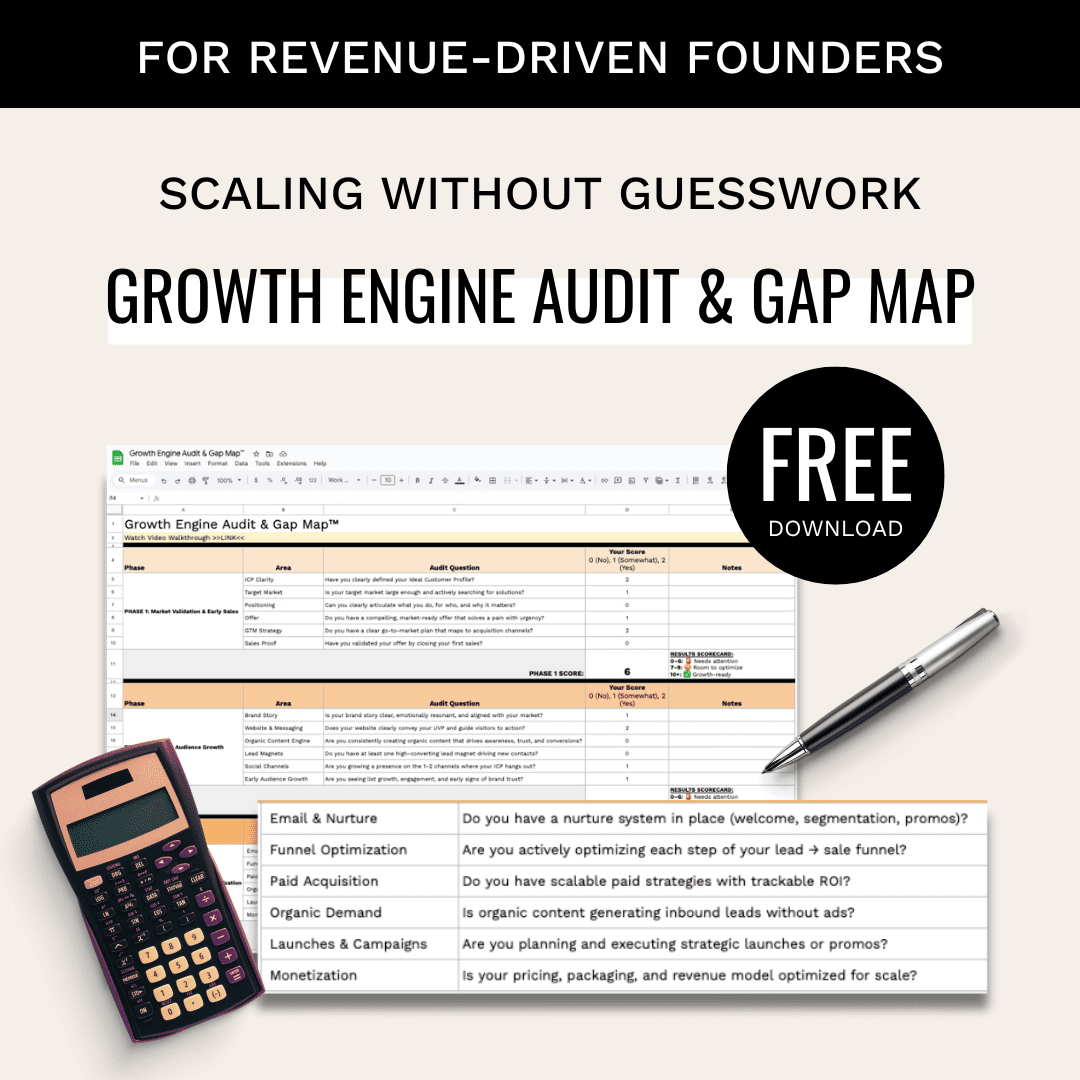In today’s fast-moving business world, a sales and marketing dashboard is essential for tracking key metrics, making informed decisions, and improving performance. Here’s a quick overview of the 7 must-have features that make a dashboard effective:
- Real-Time Updates: Get instant insights to spot trends and act quickly.
- Customizable Metrics: Tailor KPIs to align with your business goals.
- Visual Displays: Use charts, graphs, and heat maps for easy data interpretation.
- Multi-Channel Tracking: Monitor results across websites, emails, ads, and more.
- Trend Analysis: Predict future opportunities using historical and real-time data.
- Automated Reports: Save time with scheduled, easy-to-share reports.
- Team Collaboration Tools: Share insights securely and work together efficiently.
These features ensure you can turn raw data into actionable strategies that drive growth. Whether you’re tracking campaigns, analyzing customer behavior, or forecasting trends, a well-designed dashboard keeps your team aligned and informed.
How to Create the Best Marketing Dashboards That …
1. Data Updates in Real Time
Real-time data changes the way businesses track and improve performance. Instead of relying on outdated reports, it offers instant insights that empower faster, data-driven decisions.
Instant Performance Insights
With real-time updates, you can spot trends as they happen. For instance, if your cost per acquisition (CPA) suddenly spikes, you’ll notice immediately – no waiting days to uncover the issue. This quick awareness allows marketing teams to tweak campaigns on the spot and avoid wasting money.
Smarter Decision Making
Real-time data makes it easier to identify both problems and opportunities. Marketing teams can:
- Pause ads that aren’t performing well to save resources
- Ramp up successful campaigns while they’re still effective
- Adjust bids based on live market conditions
- Shift budgets toward high-performing channels
Streamlined Monitoring
A real-time dashboard simplifies tracking by pulling all key metrics into one place. This setup provides:
| Benefit | Impact |
|---|---|
| Faster Response Time | Spot and resolve issues quickly |
| Resource Efficiency | Allocate budgets based on real-time results |
| Competitive Advantage | Adapt swiftly to market changes |
| Unified Access | Keep the whole team on the same page |
To make the most of real-time data, set clear triggers for action. When metrics fall outside acceptable ranges, having pre-planned responses ensures you can act quickly and effectively.
Up next, learn how customizable metrics and KPIs can make your dashboard even more tailored to your business goals.
2. Adjustable Metrics and KPIs
Customizing metrics turns a basic dashboard into a tool focused on your specific goals. Adjusting key performance indicators (KPIs) ensures you’re keeping an eye on what drives your organization’s success.
Key Metric Categories
Here are some areas where you can tailor metrics:
| Category | Metrics to Monitor |
|---|---|
| Revenue Performance | Monthly recurring revenue (MRR), average deal size, revenue per customer |
| Campaign Effectiveness | Conversion rates, click-through rates, cost per acquisition |
| Customer Behavior | Customer lifetime value (CLV), churn rate, engagement scores |
| Sales Pipeline | Lead velocity, opportunity win rates, sales cycle length |
Adapting Metrics for Specific Needs
During busy periods or product launches, you can shift focus to metrics like daily sales or specific conversion rates.
Organizing Metrics by Priority
Organize metrics into three tiers:
- Primary: Metrics with a direct impact on revenue.
- Secondary: Metrics that support primary KPIs.
- Contextual: Metrics providing additional background.
Custom Formulas
Advanced dashboards allow for unique calculations. For instance, you can track blended acquisition costs, create custom lead scores based on user behavior, or adjust conversion rates for seasonal trends.
Alerts for Thresholds
Set alerts to notify you when metrics stray from your targets.
Up next, we’ll dive into how visual tools can make these metrics actionable.
3. Visual Data Display Options
Visual tools help transform raw metrics into easy-to-understand insights, allowing teams to quickly identify trends and make informed decisions. Various chart types are suited for different needs:
Key Chart Types
- Bar charts: Great for comparing values across categories.
- Line graphs: Ideal for tracking changes or trends over time.
- Pie charts: Best for showing proportions or percentages.
- Heat maps: Useful for highlighting intensity or performance areas.
- Gauges: Perfect for monitoring metrics in real time.
Customization Options
- Use color coding to indicate status or urgency.
- Add drill-down features for deeper analysis.
- Enable dynamic filtering to refine data views.
- Design custom chart layouts to fit specific needs.
- Ensure charts are mobile-friendly for on-the-go access.
Guidelines for Effective Use
| Display Type | Purpose |
|---|---|
| Dashboards | Quick KPI overviews |
| Reports | In-depth data analysis |
| Alerts | Highlight critical changes |
| Scorecards | Track performance metrics |
Tips for Implementation
- Group related metrics for better context.
- Stick to consistent scales to avoid confusion.
- Limit colors to what’s necessary for clarity.
- Keep layouts clean and uncluttered.
- Clearly label all charts for better understanding.
Up next: Learn how dashboards can effectively track results from multiple channels.
sbb-itb-e8c8399
4. Multi-Channel Results Tracking
Dashboards that bring together data from websites, emails, social media, and other sources provide a unified view of performance. With real-time updates and customizable KPIs, multi-channel tracking allows for a detailed analysis of how your efforts are paying off.
What Channels Are Included?
- Website analytics and visitor behavior
- Email campaign performance
- Engagement across social platforms
- Paid ad results
- Content marketing effectiveness
- CRM and sales pipeline insights
This combined perspective helps you dive deep into cross-channel performance.
How Cross-Channel Analysis Helps
- Compare how different channels perform
- Pinpoint what drives conversions
- Keep an eye on cost per acquisition
- Follow customer journeys from start to finish
- Measure how platforms contribute to results
Bringing Data Together
| Integration Method | Benefits |
|---|---|
| Basic Import | Manual uploads required |
| API Connection | Automatically syncs data in real-time |
| Custom ETL | Automates data transformation |
| Unified View | Provides a single, trusted source of information |
Connecting Performance Across Channels
- Understand how channels work together to drive conversions
- Use multi-touch attribution to see the full customer journey
- Analyze how channels influence each other
- Assess overlapping campaigns
- Evaluate how budgets are being spent
From these insights, you can:
- Compare performance across channels
- Shift resources to high-performing areas
- Fine-tune campaigns for better results
- Spot opportunities for synergy
- Assess ROI for each channel
- Customer acquisition costs
- Lifetime value by source
- Engagement rates
- Return on ad spend (ROAS)
5. Future Trend Analysis
A sales and marketing dashboard helps forecast future trends by using predictive analytics. This involves transforming historical data into forecasts that guide decision-making.
Key Predictive Metrics
Dashboards track and analyze patterns in:
- Sales pipeline speed
- Customer acquisition rates
- Seasonal performance shifts
- Long-term campaign success
- Market behavior trends
How Trend Analysis Works
The dashboard pulls together various data points to create forecasts:
| Data Type | Insights Provided | Business Impact |
|---|---|---|
| Historical Performance | Identifies past trends and cycles | Prepares for seasonal variations |
| Current Trajectories | Highlights ongoing progress | Shows immediate growth or decline paths |
| External Factors | Reflects market conditions | Considers broader economic influences |
| Leading Indicators | Detects early warning signs | Flags potential risks or opportunities early |
These insights allow businesses to act quickly and make informed choices.
Advanced Forecasting Features
The dashboard includes tools such as:
- Rolling Forecasts: Real-time updates that adjust as new data comes in
- Scenario Planning: Tools to explore "what-if" situations and potential outcomes
- Confidence Intervals: Statistical ranges indicating how reliable predictions are
- Anomaly Detection: Automatic identification of unusual trends or data points
- Visual Trendlines: Clear graphs showing directional trends
- Automated Alerts: Notifications for metrics that deviate from expectations
- Contextual Analysis: Explanations of the factors driving predictions
- Action Recommendations: Suggested next steps based on forecasted results
These features ensure businesses can interpret data effectively and respond with confidence.
6. Auto-Generated Reports
Automated reports simplify how sales and marketing data is compiled and shared, making it easier to make quick, informed decisions. By using multi-channel tracking and trend analysis, these reports organize data efficiently, turning real-time updates into actionable information.
Core Reporting Capabilities
The dashboard’s reporting system includes several key features:
| Feature | Purpose | Business Value |
|---|---|---|
| Automated Distribution | Sends scheduled reports to specific recipients | Keeps teams updated regularly |
| Custom Templates | Pre-designed layouts for different report types | Maintains consistency in reporting |
| Multi-format Export | Outputs reports in PDF, Excel, or CSV | Meets the needs of diverse stakeholders |
| Data Filtering | Focuses on selected metrics for specific reports | Offers tailored insights for various teams |
| Real-time Refresh | Updates report data instantly | Ensures decisions are based on current information |
These basic features are complemented by advanced tools that improve how data is shared and understood.
Advanced Reporting Features
The system also includes advanced tools for more detailed and effective reporting:
- Conditional Formatting: Highlights metrics that exceed predefined thresholds
- Cross-Channel Analysis: Merges data from different marketing channels into a single report
- Historical Comparisons: Tracks performance changes over time
- Custom Annotations: Lets teams add notes and context to reports
- Role-Based Access: Restricts viewing and editing based on user roles
Benefits of Report Automation
The automated reporting system takes raw data and transforms it into useful insights with features like:
- Smart Summaries: AI-driven insights that pinpoint important trends and patterns
- Exception Reporting: Alerts triggered by major changes in key metrics
- Drill-Down Capabilities: Interactive options to explore detailed data behind summaries
- Compliance Tracking: Ensures reports meet regulatory standards
- Version Control: Keeps a record of report updates and changes
Customizing Reports
Teams can adjust reports to match their specific needs through:
- Branded templates and flexible layouts for tailored presentations
- Variable Time Ranges: Options for daily, weekly, monthly, or yearly reporting
- Custom Metrics: User-defined KPIs and calculations
- Distribution Settings: Automated delivery to designated teams or departments
This automation ensures teams always have access to accurate, up-to-date data without the need for manual work.
7. Team Sharing Tools
Team sharing tools enhance collaboration by building on real-time updates and automated reports. These features allow teams to work together efficiently while maintaining security and accountability.
Key Sharing Features
| Feature | Function | Business Impact |
|---|---|---|
| Role-Based Access | Assigns permissions based on job roles | Protects sensitive data and ensures compliance |
| Collaboration Spaces | Provides areas for team discussions | Centralizes feedback and analysis |
| Version History | Tracks changes to settings | Promotes accountability |
| Annotation Tools | Adds context to data points | Helps teams interpret data effectively |
| Sharing Presets | Offers pre-configured views for teams | Speeds up sharing and decision-making |
Enhanced Collaboration Tools
The dashboard also offers advanced features to improve teamwork, such as:
- Interactive Comments: Add notes directly to specific metrics for clarity.
- Data Snapshots: Save specific data views for future use.
- Scheduled Updates: Get automated alerts when certain metrics hit predefined thresholds.
- Mobile Access: Securely access dashboards on mobile devices.
- Audit Trails: Keep detailed logs of who accessed or modified data.
Cross-Department Collaboration
These tools connect departments by offering:
- Unified Workspaces: Shared views updated in real-time for all teams.
- Customizable Permissions: Control over who can access specific data.
- Activity Feeds: Real-time updates on team interactions with the dashboard.
- Export Controls: Manage how data is shared externally.
This setup ensures teams across the organization can act on the same insights, fostering better coordination.
Data Security and Compliance
To keep data secure, the sharing tools include:
- Single Sign-On: Link with your company’s authentication system for easy and secure login.
- Encryption: Protects data during transmission.
- Access Logs: Tracks who used the dashboard and when.
- IP Restrictions: Limits access based on network location.
- Data Masking: Hides sensitive information based on user permissions.
These features ensure that collaboration happens without compromising security or compliance.
Conclusion
A well-designed dashboard helps teams make informed decisions and work together effectively. The seven features below create a system that turns raw data into actionable insights, enabling quicker and smarter decisions.
Impact on Business Performance
| Feature | Purpose | Result |
|---|---|---|
| Real-Time Updates | Respond instantly to changes | Faster decisions |
| Adjustable Metrics | Tailored tracking for goals | Better alignment with goals |
| Visual Displays | Simplify complex data | Easier communication |
| Multi-Channel Tracking | Combine data from all sources | Smarter resource use |
| Trend Analysis | Identify future opportunities | Stay ahead strategically |
| Auto-Generated Reports | Save time and effort | Boost productivity |
| Team Sharing | Improve teamwork | Better execution |
This table highlights how a results-focused dashboard can bridge strategic planning and execution seamlessly.
Getting the Most Out of Your Dashboard
To maximize the benefits of these features, businesses should:
- Match dashboard metrics to their main goals
- Set clear rules for managing data
- Train employees on how to use the dashboard effectively
- Regularly review and adjust KPIs
For companies looking to boost their marketing efforts with a high-performing dashboard, Data-Mania specializes in crafting data-driven strategies. By blending technical expertise with marketing insights, they help businesses turn dashboard data into real growth opportunities.
"Without execution, strategy is dead."
These seven features lay the groundwork for marketing success. If you’re ready to use data to drive growth, Data-Mania can help you build a streamlined, effective strategy.
Related Blog Posts
- Marketing Tech Stack Checklist for Early-Stage Startups
- Ultimate Guide to Marketing Channel Benchmarking
- Real-Time Analytics for Marketing Decision Support
- 5 Best Practices for B2B Marketing Automation Success




